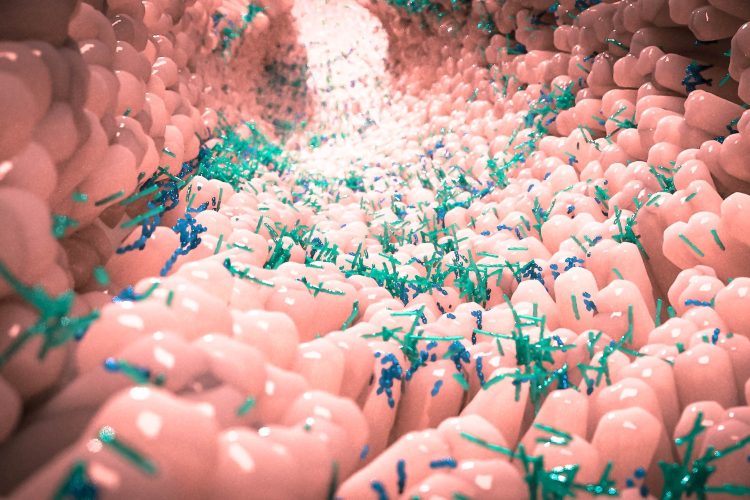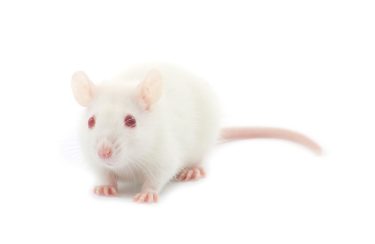How artificial sweeteners are changing our friendly gut bacteria
- Like
- Digg
- Del
- Tumblr
- VKontakte
- Buffer
- Love This
- Odnoklassniki
- Meneame
- Blogger
- Amazon
- Yahoo Mail
- Gmail
- AOL
- Newsvine
- HackerNews
- Evernote
- MySpace
- Mail.ru
- Viadeo
- Line
- Comments
- Yummly
- SMS
- Viber
- Telegram
- Subscribe
- Skype
- Facebook Messenger
- Kakao
- LiveJournal
- Yammer
- Edgar
- Fintel
- Mix
- Instapaper
- Copy Link
Posted: 8 September 2022 | Dr Aparna Shil, Dr Havovi Chichger | 1 comment
The use of artificial sweeteners is prevalent throughout the food industry, but scientists remain unsure as to what effect these ingredients have on our gut microbiota and health.


A depiction of the gut microbiome
Sweeteners are commonly used in foods and beverages across the world to support a healthier lifestyle, control blood sugar for individuals with diabetes and to aid in weight loss. Following the introduction of the Soft Drinks Industry Levy in the UK in 2018 (sugar tax) as well as equivalent approaches in countries such as Canada, South Africa and areas in Europe, sweeteners have become an even more popular sugar alternative.1 As such, this increasing use of sweeteners has led to an expected global market value of $9.7 billion by 2024.2
Among different sweeteners, saccharin, sucralose and aspartame are the most frequently used with a compound annual growth rate (CAGR) of 2.2 percent, 5.43 percent and 5.4 percent respectively from 2018 to 2024.3 Often, these sweeteners will be referred to by their relevant E numbers, E954 (saccharin), E955 (sucralose) or E951 (aspartame).
Having been deemed non-toxic by international food standards agencies, including the European Food Safety Authority (EFSA), the acceptable daily intake of sweeteners is equivalent to around 40 cans of soft drink assuming a body weight of 68kg.4 While it is unlikely that the population will drink this amount in one day, sweeteners are found in a range of products and thus can have a cumulative effect. These products include sports drinks (57 percent), meal replacement drinks (58 percent), gum (89 percent), cakes and pastries (17 percent) and desserts (10 percent), where the percentage of products in each category that contains sweeteners appears in brackets.5 The sweetener market is therefore well established in the food and drink industry with sweeteners consumed by nearly all of the public in some form in their diet.
How do sweeteners work?
Sweeteners, like saccharin, sucralose and aspartame, are used in a range of food and drink products. Given that they are 160-600 times sweeter than sugar, even a minute amount of sweetener can be perceived by our tongues as intensely sweet. This is because sweeteners can bind to a sweet taste receptor with much greater affinity than sugar.6 Sweeteners utilise this affinity to trick our traditional taste sensors into thinking they are sugar, attaching to our taste buds which sends a signal via our taste sensor nerves to the brain stem where we respond positively to the sweet taste. This is an important evolutionary response because sweet foods are typically energy‑rich and, in a pre-obesity world, survival relied on energy.
However, this sweet taste response to sweeteners results in sugar signalling without sugar input, which can result in confusing hormone and nerve responses to artificial sweetener consumption. Furthermore, the taste sensing machinery in our tongue, which sweeteners bind to, has been recently identified in other parts of the body, including the heart, lungs, bone, bladder and intestine.7 As such, we are only just beginning to understand the effect of sweeteners on human physiology with controversy in the field regarding the pros and cons of their use in our diets.
The gut microbiome
Many studies remain inconclusive regarding the health impact of artificial sweeteners and conflicting outcomes from epidemiological and experimental studies poses the question of whether these food additives are safe to consume or warrant re-evaluation. In the pro column, several investigations demonstrate that sweeteners have positive effects on weight loss and sugar reduction. Sweeteners have also shown the capability to improve outcomes related to retina damage in a model of diabetes, and lung function in a model of lung damage.8,9 Conversely, there are studies in mice which link sweetener consumption with the development of glucose intolerance, which can be a pre-cursor to diabetes.10 The mechanism for this effect is not fully understood, but it has been strongly linked to the negative effect of sweeteners on gut microbiota – the bacterial population which lines our intestines and supports our digestion and overall health.


Studies with mice have linked sweetener consumption with the development of glucose intolerance
While it is now well-recognised that sweeteners can impact the abundance and diversity of bacteria in our microbiota, we still do not have a full understanding of how sweeteners impact these bacteria. Our recent research has focused on understanding the impact of commonly consumed artificial sweeteners, saccharin, sucralose and aspartame, on ‘healthy’ gut bacteria and how any changes could impact our intestine.11 The study demonstrated that two types of gut bacteria which are present in all gut microbiotas – E. coli and E. faecalis – had an increased ability to be pathogenic when exposed to sweeteners. These pathogenic bacteria were found to attach to, invade and kill gut epithelial cells that line the wall of the intestine.
It is known that bacteria such as E. faecalis which cross the intestinal wall can enter the blood stream and congregate in the lymph nodes, liver and spleen, causing a number of infections (eg, septicaemia). This study discovered that at a concentration equivalent to two cans of diet soft drink, all three artificial sweeteners significantly increased the adhesion of both E. coli and E. faecalis to intestinal Caco-2 cells, and differentially increased the formation of biofilms. Bacteria growing in biofilms are less sensitive to antimicrobial resistance treatment and they are more likely to secrete toxins and express virulence factors, which are molecules that can cause disease.
This study is the first to show that some of the sweeteners most commonly found in food and drink – saccharin, sucralose and aspartame – can make normal and healthy gut bacteria become pathogenic. These pathogenic changes include greater formation of biofilms and increased adhesion and invasion of bacteria into human gut cells. These changes could lead to our own gut bacteria invading and causing damage to our intestine, which can be linked to infection, sepsis and multiple-organ failure.
We know that overconsumption of sugar contributes significantly to the development of conditions such as obesity and diabetes, however, we are starting to learn that artificial sweeteners may also come with certain health concerns. Therefore, it is important that we increase our knowledge of sweeteners versus sugars in our diets to better understand their impact on our health. This will facilitate a balanced and well-informed judgement of the optimum type and amount of sweetener that should be used in food and drink.
References
- Soda taxes in Europe – “Soda Taxes in Europe”. 5 September 2019. Archived from the original on 20 April 2021. Retrieved 5 April 2021.
- PRNewswire, The “Artificial Sweetener Market – Forecasts from 2019 to 2024”; Sept. 3, 2019 https://www.prnewswire.com/news-releases/global-artificial-sweetener-market-report-2019-market-is-expected-to-reach-us9-70-billion-in-2024-from-us7-22-billion-in-2018–300910602.html. Dublin, Ireland, 2019.
- Research and Markets, Artificial Sweetener Markets, 2019 (Accessed 20 October 2020). Aspartame Market – Forecasts from 2019 to 2024. https://www.researchandmarkets.com/reports/4661609/aspartame-market-forecasts-from-2018-to-2023. Saccharine Market – Forecasts from 2019 to 2024. https://www.researchandmarkets.com/reports/4858192/global-saccharin-market-forecasts-from-2019-to-2024. Sucralose Market – Forecasts from 2019 to 2024. https://www.researchandmarkets.com/reports/4801628/sucralose-market-forecasts-from-2019-to-2024., 2019.
- British Library EThOS: Artificial sweeteners negatively impact gut epithelium and microflora (bl.uk)
- EFSA report – Protocol for the re-evaluation of sweeteners (europa.eu)
- Li X, Staszewski L, Xu H, et al. 2002. Human receptors for sweet and umami taste. Proceedings of the National Academy of Sciences of the United States of America, [e-journal] 99 (7), pp.4692-4696. 10.1073/pnas.072090199 [doi].
- D’Urso O, Drago F. 2021. Pharmacological significance of extra-oral taste receptors. European Journal of Pharmacology, 910, p.174480.
- Harrington EO, Vang A, Braza J, et al. (2017). Activation of the sweet taste receptor, T1R3, by the artificial sweetener sucralose regulates the pulmonary endothelium. American Journal of Physiology-Lung Cellular and Molecular Physiology, [e-journal] 314 (1), pp.L165-L176. ajplung.00490.2016.
- Lizunkova P, Enuwosa E, Chichger H. 2019. Activation of the sweet taste receptor T1R3 by sucralose attenuates VEGF-induced vasculogenesis in a cell model of the retinal microvascular endothelium. Graefe’s Archive for Clinical and Experimental Ophthalmology, 257(1), pp.71-81.
- Suez J, Korem T, Zeevi D, et al. 2014, “Artificial sweeteners induce glucose intolerance by altering the gut microbiota”, Nature, vol. 514, no. 7521, pp. 181-186.
- Shil A, Chichger H. 2021. Artificial sweeteners negatively regulate pathogenic characteristics of two model gut bacteria, E. coli and E. faecalis. International Journal of Molecular Sciences, 22(10), p.5228.
About the authors




Issue
Related topics
Data & Automation, Health & Nutrition, Obesity, Research & development
Related organisations
American Journal of Physiology-Lung Cellular and Molecular Physiology, Anglia Ruskin University (ARU), Aspartame Market, EFSA, European Journal of Pharmacology, Graefe's Archive for Clinical and Experimental Ophthalmology, International Journal of Molecular Sciences, Jahangirnagar University









This is an interesting article and suggests further investigation of the blanket use of sweeteners should be carefully considered. This is especially true as many consumers focus only on sweeteners in “diet” food and drink. Re-formulation to reduce sugar levels mean that sweeteners are also in other products (such as toothpaste) that could affect the overall intake of sweeteners.